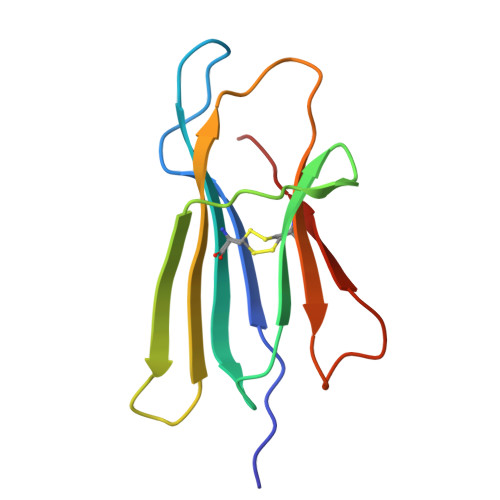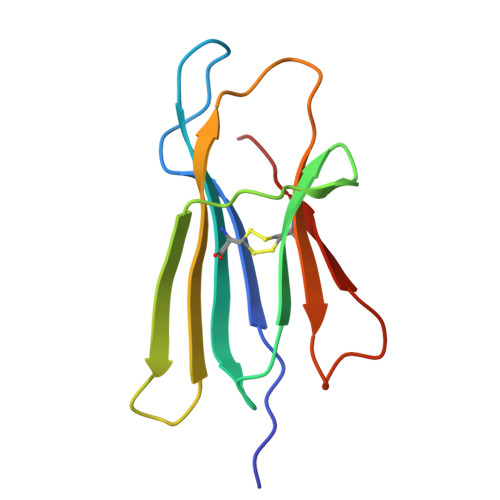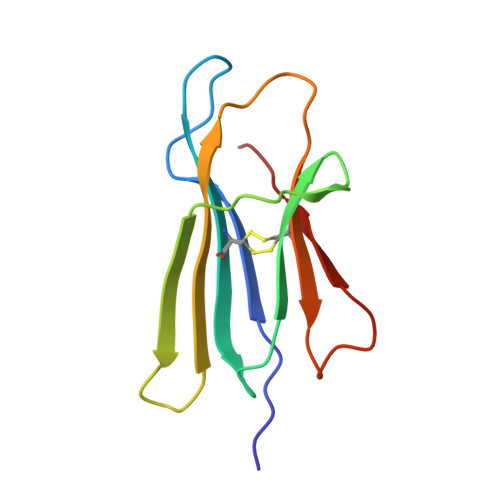Rational design of mutations that change the aggregation rate of a protein while maintaining its native structure and stability.
Camilloni, C., Sala, B.M., Sormanni, P., Porcari, R., Corazza, A., De Rosa, M., Zanini, S., Barbiroli, A., Esposito, G., Bolognesi, M., Bellotti, V., Vendruscolo, M., Ricagno, S.(2016) Sci Rep 6: 25559-25559
- PubMed: 27150430
- DOI: https://doi.org/10.1038/srep25559
- Primary Citation of Related Structures:
5CFH, 5CKA, 5CKG - PubMed Abstract:
A wide range of human diseases is associated with mutations that, destabilizing proteins native state, promote their aggregation. However, the mechanisms leading from folded to aggregated states are still incompletely understood. To investigate these mechanisms, we used a combination of NMR spectroscopy and molecular dynamics simulations to compare the native state dynamics of Beta-2 microglobulin (β2m), whose aggregation is associated with dialysis-related amyloidosis, and its aggregation-resistant mutant W60G. Our results indicate that W60G low aggregation propensity can be explained, beyond its higher stability, by an increased average protection of the aggregation-prone residues at its surface. To validate these findings, we designed β2m variants that alter the aggregation-prone exposed surface of wild-type and W60G β2m modifying their aggregation propensity. These results allowed us to pinpoint the role of dynamics in β2m aggregation and to provide a new strategy to tune protein aggregation by modulating the exposure of aggregation-prone residues.
Organizational Affiliation:
Department of Chemistry, University of Cambridge, Cambridge CB2 1EW, UK.
















